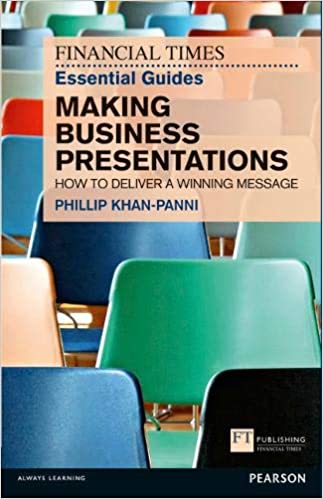The right way to introduce a speaker
Why a good introduction is essential for a speaker
The Introduction is an essential part of speechmaking. If you are the chairman of the meeting, or if you are the speaker, you must take hold of the Introduction and make it work. All speakers need to know how to make good introductions, both to ensure that they get the right build up before speaking, and because making an introduction is one of the skills that make a complete speaker.
Let’s start with an example of an introduction that failed the speaker:
Our next speaker is going to tell us about his travels in America and what he found so exciting in that country. Michael Steel says he often goes there, and he’s here to tell us his latest adventures.
The chairman then stopped talking and looked towards the speaker, gesturing limply as much as to say, “It’s all yours.” The audience didn’t know when to applaud, so as the speaker strode to the front there was a smattering of applause that rapidly died, leaving the speaker high and dry. He had to crank up his audience from cold. So let’s consider why this (fairly typical) introduction was less than adequate.
- It was too vague about the topic that was to be covered in the speech. “About his travels”—what kind of travels?
- In saying something as meaningless as “what he found exciting in that country”, the chairman revealed that he probably hadn’t exchanged more than a couple of words with him before the meeting.
- “He’s here to tell us his latest adventures” is a form of words that diminishes the value of the speech.
- There was no mention of the speaker’s credentials. Why should anyone want to hear Michael Steel talk about America? Does he have some special insight, some particular expertise, some unusual purpose in travelling to America?
- There was no “Hook”—nothing to grab the attention of the audience and make them want to sit up and listen.
- It was not obvious when the introduction was over, save for the embarrassed silence at the end. The speaker was left to create his own First Impression, without the benefit of a “launch” from the chairman.
- The chairman did not take his introduction to a climax, nor did he lead and sustain the applause until the speaker was in the position to take charge of the platform.
Now you may be thinking, isn’t that rather a lot to squeeze into a brief introduction, and you’d be right. But, you see, there’s a lot more to an introduction than you may have thought.
Some Dos
What should an introduction consist of? It should:
- Engage the attention of the audience
- Raise their expectations, but not too highly
- Launch the speaker
- Mention his/her name several times
- Establish the speaker’s expertise or qualifications
- State what the speaker will be talking about (speech title)
- Be brief
- Create a good impression of the speaker
Some Don’ts
Needs no introduction…
Then why make one? This is just lazy talk.
Without further ado…
First of all, it’s old fashioned. Secondly, have you considered what it means? Do really intend to say that it has been a bit of a nuisance talking about the speaker, so let’s quit now? “Ado” means “difficulty, bother or fuss”. Think of “Much ado about nothing”.
The speaker gave me this…
This undermines the speaker. It says, in effect, “I’m not taking responsibility for the good things I’m about to tell you about the speaker” and implies that the speaker is immodest.
Good lady wife…
The phrase is so cringe-making. Does he have a bad wife as well? Sometimes people say “good lady” or “better half”. Don’t be one of them. It’s a shibboleth that demeans the lady and you as well.
Put your hands together…
In prayer? It’s one of those dreadful clichés that have been popularised by ill-educated game show hosts on TV.
None other than…
It’s all a bit unnecessary, and reminds me of the introduction song to Donald Duck cartoons, which ends, “No one (pause) but Donald Duck!”
Heard he’s good…
Sounds like a challenge. “Heard he’s good, so let’s see if it’s true!” It places an unfair burden of proof on the speaker, and raises the audience’s expectations to an unreasonable level.
How to do it right
- Consult the speaker beforehand
- Obtain only Relevant info for the occasion
- Consider your Opening/maintain good Order
- Present speaker’s Credentials
- Give the Speaker/Guest Kudos
- Do it with Enthusiasm
- Give Title—speech / Speaker / Topic
Let your rocket launch the Speaker!
Finish on speaker’s name, with a rising flourish: John (pause) SMITH!
Example of correct speaker introduction:
Our next speaker is well known to you all. I won’t say he needs no introduction, because it is always a pleasure and an honour to introduce Les King, a man of many parts. He is witty, humorous, and a fascinating raconteur. When Mike Silverman appointed him Area Governor, Les said that it was proof that Mike has a sense of humour. Among his many interests is a fascination with computers and with the Internet, which he uses to communicate with Toastmasters everywhere. This evening he is going to show us how easy it is to cope with the complexities of the Internet. The title of his speech is, “Talk is cheap, but the Net is cheaper.”
Ladies and gentlemen, let’s give a friendly welcome to our Area Governor, Les (pause) KING!
Contact us
enquiries: 0845 1659240 (+44 (0)845 1659240)
alternative: 07768 696254 (+44 (0)7768 696254)
email: phillip@phillipkhan-panni.com blog: PKPWordsmith

